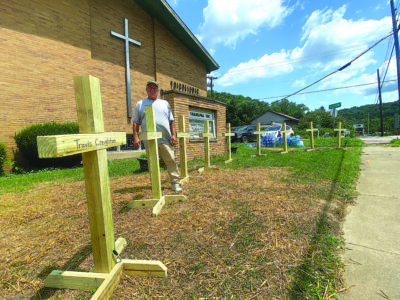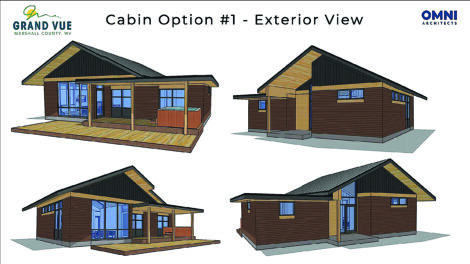West Virginia governor unveils plan to reopen schools
CHARLESTON — Gov. Jim Justice said Wednesday that West Virginia has all the tools needed to safely reopen schools by the Sept. 8 start date.
“There’s no chance in all the world, to the best of my abilities, will I absolutely put a kid, a teacher, a service personnel person, or anyone into a situation I feel is unsafe,” Justice said. “We have safe methods to reopen our schools that we’ve built in from a standpoint of local control and scientific metrics.”
Speaking Wednesday during his coronavirus briefing from the Capitol, Justice said schools would continue their reopening plans aimed for Sept. 8.
For parents concerned about sending their children back to school, virtual learning would be available. Justice said school systems also would work with teachers and school service personnel who also feel uncomfortable returning to school.
“If you feel like your child should not be at the school, then we’re going to make that child’s education, along with all the children’s education, that choose to not come to the schools virtual,” Justice said. “We will absolutely deliver a quality education to them for the time period they decide not to come to the school. We will do the exact same thing for our teachers and service personnel.”
County boards of education are required to submit plans for reopening by Aug. 14 and plans must include a five-day in-person learning plan, a blended learning plan and an all-virtual plan. Justice said the state Department of Education and Department of Health and Human Resources would implement a color-coded system to determine when schools should shut down and switch to online learning.
Green would mean schools can stay open, with colors ranging between yellow, orange, and red to determine if schools should switch to a blend of virtual and classroom learning to an all-virtual learning program. Justice said that the specifics are being developed and will be released later in the month, but the color-coded system and map will be available to parents to help them make decisions.
“From that, what we will do is be able to look at a facility and say this county has this level of the metric and it is beyond what we think is acceptable for all students to be in school or for the school to be open,” Justice said. “In that county at that point in time, we will not have school being open. We will do it virtually until we get the numbers down.”
The color code could also apply to school sports, though those details are still being worked out. Justice said he has yet to talk with the West Virginia Secondary School Activities Commission about that.
“This situation is absolutely fluid,” Justice said. “It moves. We have to change. We have to pivot. We have to absolutely move with the situation. Who knows what is going to happen in the next week. We hope and pray we are moving in the right direction, but we may very well have to change again.”
West Virginia’s 55 school systems were shut down on March 13 before the state had any reported cases of the virus. State School Superintendent Clayton Burch said all students age 9 and up will be required to wear face masks. Schools will be required to enforce social distancing guidelines, keep schools clean and disinfected, and keep students fed whether in-school or if the student is learning from home
“We will make sure it is healthy and safe. We will work with our health officials,” Burch said. “We are going to make sure we are much more prepared than we were March 13. We are going to take care of these children any way possible.”
Justice announced a $6 million Kids Connect program to make sure students have access to wireless internet. The plan involved 1,000 wireless hotspots at 688 K-12 schools, 255 public libraries, 323 higher education facilities and 31 state parks. Justice said the plan is to have the WiFi hotspots up and running by Sept. 8. For students with limited access to transportation, bus transportation would be provided.
“At the end of the day, this is the very best program I can bring to you,” Justice said. “We will absolutely do it and do it correctly.”
“If there are 1,000 sites where children can obtain access to WiFi, we have to assist those families to make sure they have access,” Burch said. “We want to create the most equitable education system we can during this crazy crazy time.”
As of Wednesday, West Virginia has $94 million in direct funding for K-12 schools during the COVID-19 crisis through the federal C.A.R.E.S. Act and other federal grant funding. As for private and Christian schools, Justice said $1.6 million from the C.A.R.E.S. Act set aside for private schools would be distributed once a lawsuit against the U.S. Department of Education is resolved. Several states are suing over distributing C.A.R.E.S. Act funds to private schools.


